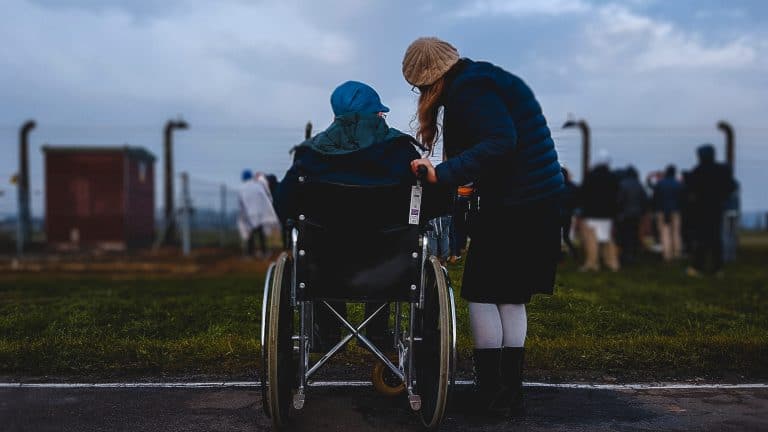35 Attention-Worthy Arthritis Facts & Stats (2024 Update)

Arthritis is an umbrella term for nearly 200 conditions affecting joints. At LoudCloudHealth, we’ve picked some of the arthritis specifics you perhaps haven’t stumbled upon by now and found some fascinating arthritis facts you ought to know.
We’re going to tell you about who is most affected by arthritis and how many people across the world experience those painful sensations. The impact of COVID19 is mentioned too.
Let’s dive straight into it and look at the most intriguing facts and figures first.
Top 10 Must-Know Arthritis Facts for 2024
- Osteoarthritis is the most common form of arthritis.
- Exercise can reduce osteoarthritis symptoms.
- 294,000 children in the US have juvenile idiopathic arthritis.
- In 2020, about 1.5 million people in the US were living with RA.
- By 2025, 67 million Americans will be diagnosed with arthritis.
- People with RA are at a higher risk of having severe coronavirus symptoms if infected.
- 44% of adult women from West Virginia had arthritis in 2019.
- CBD can help with rheumatoid arthritis prevalence.
- A spray containing both CBD and THC, Sativex, provides pain relief for RA patients
- Damp weather doesn't enhance symptoms of arthritis.
Basic Facts About Arthritis
What is arthritis and how many forms of arthritis exist?
1. Osteoarthritis, the most common form of arthritis, isn’t an inevitable part of aging.
(Verywell Health)
While the likelihood of developing an arthritic condition does increase with age, this does not imply that we’re all predestined to have bad joints.
Over the years, joints wear and tear, but young people (even children) get affected as well. Hence, there are other factors at play here (other than age), including injuries, overuse of a particular joint, weak musculature, being overweight, and so on.
2. Osteoarthritis statistics from 2019 confirm about 3.3% to 3.6% of the global population suffer from the disease.
(Verywell Health) (NCBI)
Fortunately, in most cases of osteoarthritis, patients’ pain is alleviated with rest.
Despite the fact that regular activity is highly recommended for arthritis patients — for muscle strengthening — adequate rest is also needed. In fact, resting can greatly reduce joint pains in most arthritis patients; particularly after some increased physical activity.
3. Exercise can reduce osteoarthritis symptoms.
(UpToDate)
Exercising is an excellent way of staying in shape. Osteoarthritis facts suggest even people with arthritis can benefit from it. However, before starting with the exercise, it’s important to talk to your doctor to avoid accidents while performing particular movements.
The most effective exercises for people with arthritis include aquatic and land-based activities, in addition to Tai chi and yoga that need to be supervised and modified.
4. Rheumatoid arthritis (RA) is not just a degenerative joint disease, it’s a systemic autoimmune disease.
(Versus Arthritis)
People unfamiliar with arthritis classification and terminology tend to confuse osteoarthritis with rheumatoid arthritis.
To avoid any further confusion, here are some basic rheumatoid arthritis facts: unlike osteoarthritis, this condition is an autoimmune disease; meaning, it is triggered when your immune system acts contrary to its purpose and instead of defending your body’s healthy tissue, it attacks it.
In the case of RA, your joints are the affected tissue, but since this is a systemic disease, it eventually causes harm to other organs as well.
5. Juvenile arthritis facts confirm children and young adults can also get arthritis, i.e. juvenile idiopathic arthritis, which usually goes undiagnosed.
(Mayo Clinic)
This condition, also known as childhood arthritis, occurs in children under 16. It can cause swelling, constant joint pain, stiffness, and sometimes even fever or rash.
The symptoms can last from few months to few years, whereas some forms of this condition can lead to growth problems, eye inflammation, and joint damage.
6. Fibromyalgia is also a form of arthritis.
(Arthritis Foundation)
Fibromyalgia is a form of arthritis . Hence, arthritis prevalence of this type translates to about 4 million people in the US alone. Fibromyalgia manifests itself through stiffness and pain in supporting tissue around the bones and joints, that play an important role in their movement.
The most commonly affected parts are the muscles and tendons in the neck, shoulders, spine, and hips that are usually tender and aching. Other symptoms patients experience include unexplainable fatigue, poor concentration, and deviation from normal sleep patterns.
7. Joints can get inflamed as a result of lupus, too.
(Versus Arthritis)
Another contributor to the overall high prevalence of arthritis is lupus — yet another systemic autoimmune disease that can affect different organs in our bodies, including the skeletal system. Lupus commonly affects the joints, manifested as painful inflammation (the core symptom of arthritis).
In other words, lupus can develop rheumatoid arthritis in patients with more severe joint issues, as well as a rare case of arthritis called Jaccoud’s arthropathy, but these are somewhat less common.
8. Calcium crystals, contained in our teeth and bones, can cause arthritis when present in the wrong places in our body.
(Versus Arthritis)
Are there by any chance some fun facts about arthritis? Probably not, but we’ve come across a rather strange one. There’s a form of arthritis called acute calcium pyrophosphate (CPP) crystal arthritis — a painful condition affecting mostly knee joints, causing pain, stiffness, and swelling.
The unpleasant symptoms are caused by calcium deposits rubbing against soft tissue around the joints. Namely, calcium crystals are normally contained in bones and teeth, so how do they end up near the joints? They shake loose and leave the cartilage as a part of a process grotesquely named “crystal shedding.”
9. Gout definition: it is a painful form of arthritis caused by crystals forming in and around the joints.
(Versus Arthritis)
According to arthritis stats, gout is the most frequently encountered type of inflammatory arthritis, which is more common in men. It mostly affects people with high levels of urate in their blood.
Though they are not the only factors to blame, overeating and alcohol abuse can both lead to the onset of this condition.
10. Some lifestyle-related diseases may develop as a result of arthritis.
(Illinois Bone & Joint Institute)
Due to severe pain, people suffering from arthritis often rest to relieve some of their symptoms. Nevertheless, arthritis statistics have shown that this often leads to the complete disregard of physical activity, which doesn’t only further complicate their arthritis-related issues but also worsens their mental health as well.
Not to mention that inactive individuals are also prone to obesity, diabetes, heart disease, and so on.
11. Arthritis facts for the US: May is the National Arthritis Awareness Month.
(OMA)
The main event of the month is called “Walk to Cure Arthritis” where each year millions of dollars are raised to fund arthritis research.
More importantly, the aim is to improve the situation by highlighting the significance of increased scientific research and encourage physical activity among arthritis patients, who are often reluctant to engage in moderate activities they might benefit from.
12. The most common arthritis symptoms include pain, stiffness, redness, swelling, and reduced motion range.
(Mayo Clinic)
The two most common arthritis types are rheumatoid arthritis and osteoarthritis. Other types include gout, ankylosing spondylitis, juvenile idiopathic arthritis, reactive arthritis, thumb arthritis, psoriatic arthritis, and septic arthritis.
The risk factors for arthritis can be linked to age (older people have a higher risk of developing this condition), gender (women are more likely to suffer from arthritis), obesity, previous joint injuries, and family history.
Arthritis Statistics Worldwide
How many people worldwide are diagnosed with this disease?
13. By 2025, 67 million Americans will be diagnosed with arthritis.
(CDC) (CDC)
CDC also estimates an increase of 49% in arthritis diagnoses among men and women. In other words, there will be 78 million diagnosed arthritis patients in the US in 2040. Half of them will be people between 18-64 years, of which 34 million people will experience limitations in their day-to-day activities due to the disease.
14. 44% of adult women from West Virginia had arthritis in 2019.
(Statista)
Women suffer more profoundly compared to male patients, and when it comes to reports about arthritis by state, West Virginia has the highest number of arthritis patients–44% of adult women and 38.1% of adult men.
The next state with the highest prevalence of the disease was Kentucky with 39.4%, Alabama (37.5%), Arkansas (36.9%), and Maine (35.4%). The lowest prevalence among women was noted in Texas (24.3%).
15. In 2020, about 1.5 million people in the US were living with RA, rheumatoid arthritis statistics imply.
(PR Newswire)
Each year approximately 130,000 people in the US get diagnosed with rheumatoid arthritis. Unlike men, women are more likely to suffer from this disease. In fact, about 75% of rheumatoid arthritis patients are women, compared to only 25% of men.
Women usually develop rheumatoid arthritis between their 30s and 60s, while in men, it usually occurs when they are over 45.
16. The global rheumatoid arthritis market is expected to reach $62,935 million by 2027, rheumatoid arthritis statistics reveal.
(Allied Market Research)
Although there is no cure for this condition, stats show that certain drugs can help manage its symptoms. For example, nonsteroidal anti-inflammatory drugs (NSAIDs), disease-modifying anti-rheumatic drugs (DMARDs), uric acid drugs, and corticosteroids.
17. People with rheumatoid arthritis are at a higher risk of having severe coronavirus symptoms if infected.
(Healthline)
The risk of developing severe complications is higher if patients have type 2 diabetes, severe rheumatoid arthritis if they are older adults, and if they were hospitalized due to a respiratory infection. The link between rheumatoid arthritis and coronavirus is quite clear as RA is a form of autoimmune disease, and people with such diseases are more vulnerable.
18. Over 10 million British people have to deal with arthritis. 9 million of them are affected by osteoarthritis.
(NHS)
In contrast, rheumatoid arthritis affects “only” 400,000. Fibromyalgia, ankylosing spondylitis, cervical spondylosis, and gout are less common.
15,000 children and young people also face the challenges arthritis imposed on them. The most common type is oligo-articular JIA. It usually affects up to 4 joints in the knees, wrists, and ankles. Fortunately, it can disappear without permanent damage.
19. Arthritis statistics in the UK show 62% of British women over 80 are living with arthritis.
(Statista)
Simply put, judging by the latest research, 62% of women over 80 are living with arthritis, in addition to 55.9% of women between 75 and 79, 55.6% of women between 70 and 74, 49.1% of women between 65 and 69, and 42.6% of women between 60 and 64.
On the other hand, the arthritis incidence is lower among men, i.e., 41.5% of men older than 80 have to deal with this disease.
20. Based on the arthritis facts and statistics, 15% of the Australian population suffers from some form of arthritis.
(AIHW)
In a nutshell, that’s 3.6 million people, or one in seven Aussies. Furthermore, 9.3% of Australians (2.2 million people) are living with osteoarthritis (of which 12% are women, and 6.8% are men), and 1.9% (456,000 people) are living with rheumatoid arthritis (2.3% of women and 1.5% of men).
21. 294,000 children in the US have juvenile idiopathic arthritis.
(Medline Plus)
When it comes to juvenile arthritis statistics, looks can be deceiving. Although children might seem happy and healthy on the outside, rarely complaining about joint pain and stiffness, they can suffer from these symptoms all the same.
The most prevalent type of this condition among American children is oligoarticular juvenile idiopathic arthritis. Whereas girls are more affected by juvenile idiopathic arthritis, boys seem to be more affected by enthesitis-related juvenile idiopathic arthritis.
22. Analysis of psoriatic arthritis prevalence data reveals that 1 out of 5 people with psoriasis also have psoriatic arthritis.
(Medscape)
Psoriatic arthritis is a type of arthritis found in people who suffer from psoriasis — a chronic skin condition causing red patches on the skin, covered with scales.
Although most people develop psoriasis prior to psoriatic arthritis, there are no rules — joint problems can appear even before skin lesions. According to studies conducted in Germany, 30.2% of psoriatic patients develop psoriatic arthritis.
23. Arthritis facts for India confirm up to 14% of the population has problems with arthritis.
(Sai Sanjeevini Hospitals) (Statista)
This means that 180 million are living with arthritis. This condition’s prevalence is even higher than the incidence of, for example, cancer or diabetes.
On top of that, it’s expected that the number of arthritis cases among older adults will reach 96.7 million in 2050. In contrast, knee arthritis will become the fourth most common cause of physical disability in India.
24. At least 40% of RA patients will become disabled within 10 years, rheumatoid arthritis disability statistics reveal.
(NCBI) (Verywell Health)
After RA patients become disabled, they usually require assistance with performing most of their daily tasks, given that rheumatoid arthritis can lead to mobility limitations.
RA patients can face difficulties when it comes to standing, walking, lifting, or sitting for long periods. Based on one study, functional disability can also occur 1-2 years before a formal RA diagnosis.
25. RA patients are 2 times more likely to experience depression.
(AJMC)
17% of rheumatoid arthritis patients suffer from a major depressive disorder (MDD). Moreover, 90% of patients believe fatigue is the main cause of their depression and dissatisfaction.
Powerful Cannabis for Arthritis Treatment
What is the role of cannabis in the treatment of arthritis?
26. CBD can help with rheumatoid arthritis prevalence as it binds together with the body’s immune system receptors responsible for pain management.
(Medicinal Genomics)
One of these receptors is called CB2 — its purpose is to manage inflammation and pain. Scientists dedicated to the research of medical cannabis for the treatment of arthritis believe that when CBD enters the body, it clutches to CB2.
What’s more, it triggers specific bodily mechanisms that produce natural cannabinoids, altering the way CB2 responds to the received signals and boosting inflammation and pain management in the process.
27. Arthritis prevalence and pain could be offset with the best CBD oil for arthritis.
(Healthy Moms Healthy Babies)
Nevertheless, you should know how to recognize top quality. First and foremost, it’s essential to buy CBD oil from companies that use organic hemp plants. Additionally, for each product, the manufacturer should also have third-party lab reports on its website, ensuring that it is a clean product of adequate potency.
28. Interesting facts about arthritis and cannabis: a spray containing both CBD and THC, Sativex, provides pain relief for RA patients.
(PubMed)
A plethora of cannabis studies are aimed at investigating the efficacy of cannabis-based products in terms of painkilling regarding Sativex — a sublingual spray containing both CBD and THC.
There’s evidence that cannabis might lack the strength when it comes to severe pain, but it can be quite effective for chronic pain. The statistics show that it has alleviated many RA patients’ pains.
29. Taking into account some essential arthritis facts, if CBD proves non-effective, you might want to consider consulting your doctor for some low-dose THC product prescriptions.
(Leafly)
If CBD alone doesn’t improve your symptoms and you live in areas where either medical or recreational cannabis has been legalized, ask your doctor whether you could take CBD along with a low-dose THC product. Recent research suggests that cannabidiol has not only therapeutic properties but also counteracts the possible side effects of THC.
30. If you’re reluctant to ingest CBD products, there are also topical products to opt for.
(Medical News Today)
While some arthritis facts claim that these products are quite effective, there is no relevant data on whether they actually do deliver the required amount of CBD to the bloodstream. Furthermore, the topical CBD products often include other components that are commonly found in pain relievers such as menthol or camphor, thus making researchers uncertain whether the pain relief comes solely from CBD or not.
5 Interesting Facts About Arthritis
Here are some interesting facts you probably didn’t know about arthritis.
31. Women who smoke cigarettes are 50% more likely to develop osteoarthritis and rheumatoid arthritis.
(ScienceDirect) (Everyday Health)
However, the same can’t be said for men. In fact, smoking doesn’t increase the risk of developing osteoarthritis in males, but it does affect the chances of getting RA.
32. Tai chi can decrease stiffness and knee pain.
(Arthritis-Health)
Tai chi is a martial art that can serve as physical therapy for people with arthritis since it can improve balance and increase flexibility. Tai chi can also increase the muscles’ strength by 15%–20%, reducing the danger of fractures.
33. Damp weather doesn’t enhance symptoms of arthritis.
(WebMD)
What are some interesting facts about arthritis? Well, the most famous one is the claim that people with arthritis can predict rain. In reality, what’s responsible for joint pain is air pressure.
34. Certain foods can reduce the inflammation and pain caused by arthritis.
(Cleveland Clinic)
Even though there is no cure for this condition, some foods can help alleviate the symptoms since they contain anti-inflammatory and antioxidant properties. Facts about rheumatoid arthritis and nutrition indicate that green tea, salmon, ginger, turmeric, berries, and olive oil can be effective in pain reduction.
35. Various studies talk about the effectiveness of acupuncture in RA and OA treatment.
(Medical News Today)
Acupuncture can be very effective in arthritis treatment, given that it can improve blood flow while relaxing the muscles. It can also help fight insomnia and pain by blocking the pain signals, interesting facts about rheumatoid arthritis show. It’s said to stimulate the production of melatonin, oxytocin, serotonin, and endorphins.
Conclusion
Arthritis is a difficult but manageable condition. If you’re struggling with debilitating symptoms, you should bear in mind that there are ways to alleviate the pain.
It is of utmost importance that you approach your condition open-mindedly and without fear (or bias) so you can dig deeper beneath the surface of your possible treatments. Just look at medical marijuana and what it can do for arthritis patients. Hopefully, our arthritis facts have either reaffirmed your positive attitude or encouraged you to search for some potent alternate solutions.
FAQs
What is the main reason for arthritis?
The main reason for developing arthritis can be linked to—family history, gender, age, previous injuries, and obesity. First of all, if somebody in your family has arthritis (parents or siblings), it’s more likely that you’ll develop the same condition later in life.
Next, women are more likely to develop arthritis, compared to men, as well as older and obese people. And lastly, people who already suffer from joint injury could easily develop arthritis on the same joint.
What percent of the population has arthritis?
When we talk about osteoarthritis, 3.3%–3.6% of the global population suffers from this condition, and it affects 1 in 7 US adults (32.5 million people). On the other hand, rheumatoid arthritis affects 1% of the world population and about 1.5 million adult Americans.
In the US alone, it’s predicted that by 2025 there will be 67 million people suffering from arthritis.
Which country has the highest rate of arthritis?
US, American Samoa, and Kuwait had the highest age-standardized osteoarthritis prevalence rates, while the lowest rates were noted in Taiwan, North Korea, and Madagascar. This data was based on the most extensive study made by Global Burden of Diseases in 2017, which included 195 countries and 28 regions.
That said, the same data shows us that age-standardized RA prevalence was highest in the UK, Trinidad and Tobago, and Barbados, compared to Indonesia, Timor-Leste, and Sri Lanka that had the lowest recorded rates.
What is the normal age for arthritis?
While 30 to 60 years is the average onset of rheumatoid arthritis, this disease doesn’t only affect older people.
The data on the average age of contracting arthritis hasn’t yet been reported, but as per some reports, up to two-thirds of individuals affected by arthritis are under 65, children included. So clearly, there are no rules when it comes to getting arthritis.
Which state is best for arthritis?
California, Hawaii, Colorado, and Virginia are the best states for people with arthritis. California is ideal for people with RA since the weather is constantly warm and there’s minimal humidity in the air. Next, we have Hawaii and its less humid parts like the Kona side of the Big Island. Then, Colorado with its dry climate, and lastly, there’s Virginia with its mild weather.
Why is this important? Arthritis facts show that people with this condition often feel pain when there are changes in the temperature, air pressure, and humidity. Therefore, finding a place with stable weather can be essential for people who have arthritis.





